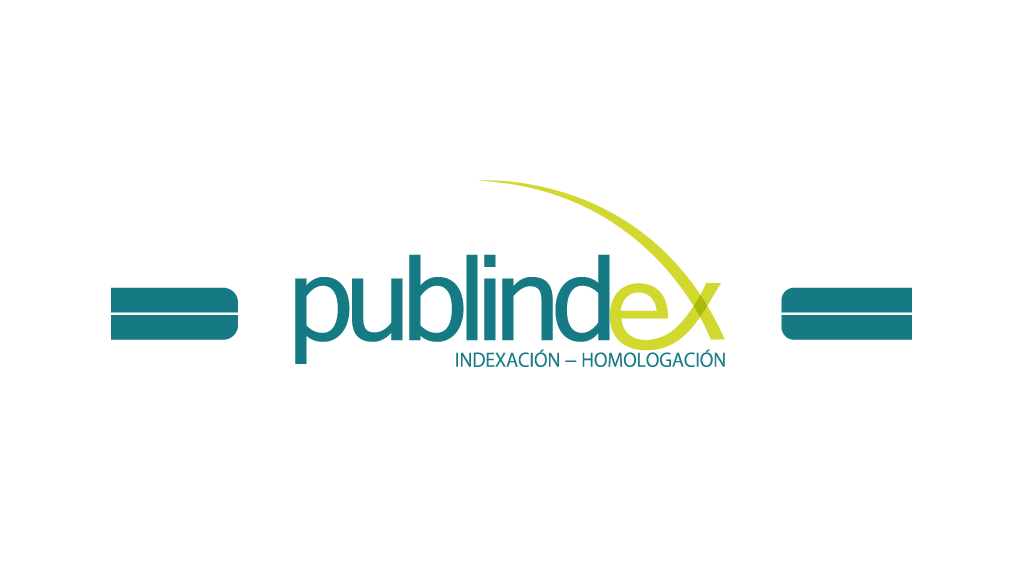Authors who publish in this journal agree to the following terms:
Acta Colombiana de Psicología complies with international intellectual property and copyright laws, and particularly with Article No. 58 of the Political Constitution of Colombia, Law No. 23 of 1982, and the Agreement No. 172 of September 30, 2010 (Universidad Católica de Colombia Intellectual Property Regulation).
Authors retain their copyright and grant to the Acta Colombiana de Psicología the right of first publication, with the work registered under Creative Commons attribution license, which allows third parties to use the published material, provided they credit the authorship of the work and the first publication in this Journal.
Abstract
Maternal cocaine abuse during pregnancy is associated to neglect, abuse, and mother-child bond disruption, which directly affects infant development; therefore, various neurobehavioral problems of children of drug-dependent parents could be attributed to inadequate maternal behavior or prenatal exposure to drugs. Thus, the aim of this research was to analyze the effects of chronic cocaine administration during pregnancy on postpartum maternal behavior. To do this, 21 CD1 pregnant female mice were randomly assigned for administration of saline solution and cocaine (25 mg/kg/day and 50 mg/kg/day), from day 8 to 21 of gestation. After delivery, for 15 minutes a day, during 20 days, the frequency of occurrence of 16 behavioral patterns of maternal behavior was individually recorded, using an ethogram. Cocaine slightly affected maternal behavior frequency, although it may have affected other parameters, such as latency, duration, and sequence of this behavior.

References
Ackerman, J. P., Riggins, T., & Black, M. M. (2010). A review of the effects of prenatal cocaine exposure among schoolaged children. Pediatrics, 125, 554-565. doi: 10.1542/ peds.2009-0637
Adinoff, B., Devous, M. D., Williams, M. J., Best, S. E., Harris, T. S., Minhajuddin, A. Z., & Cullum, M. (2010). Altered neural cholinergic receptor systems in cocaine-addicted subjects. Neuropsychopharmacology, 35, 1485-1499. doi: 10.1038/npp.2010.18
Alsina Llanes, M., Brun, V. D., & Olazábal, D. E. (2015). Development and expression of maternal behavior in naive female C57BL/6 mice. Developmental Psychobiology, 57, 189-200. doi: 10.1002/dev.21276
Angoa-Perez, M., & Kuhn, D. M. (2015). Neuronal serotonin in the regulation of maternal behavior in rodents. Neurotransmitter, 2,1-6. doi: 10.14800/nt.615
Bennett, D., Bendersky, M., & Lewis, M. (2007). Preadolescent health risk behavior as a function of prenatal cocaine exposure and gender. Journal of Developmental & Behavior Pediatrics, 28, 467-472. doi: 10.1097/DBP.0b013e31811320d8
Caffrey, M. K., & Febo, M. (2014). Cocaine-associated odor cue re-exposure increases blood oxygenation level dependent signal in memory and reward regions of the maternal rat brain. Drug and Alcohol Dependence, 134, 167-177. doi: 10.1016/j.drugalcdep.2013.09.032
Caldji, C., Diorio, J., & Meaney, M. J. (2000). Variations in maternal care in infancy regulate the development of stress reactivity. Biology Psychiatry, 48,1164-1174. doi: 10.1016/j.yfrne.2008.03.003
Carrera-Guermeur, O. (2007). Apego y Anorexia Nerviosa: manipulación de las experiencias tempranas y desempeño en el procedimiento experimental de anorexia basada en la actividad. (Tesis inédita doctoral). Facultad de Psicología. Universidad de Santiago de Compostela USC. España. Recuperado de http://dspace.usc.es/bitstream/10347/2298/1/9788497508452_content.pdf
Champagne, F. A., & Meaney, M. J. (2007). Transgenerational effects of social environment on variations in maternal care and behavioral response to novelty. Behavioral Neuroscience, 121, 1353-1363. doi: 10.1037/0735-7044.121.6.1353
Champagne, F. A., Francis, D. D., Mar, A., & Meaney, M. J. (2003). Variations in maternal care in the rat as a mediating influence for the effects of environment on development. Physiology & Behavior, 79, 359-371. doi: 10.1016/S00319384(03)00149-5
Chaplin, T. M, Visconti K. J., Molfese, P. J., Susman, E. J., Klein, L. C., Sinha, R., & Mayes, L. C. (2014). Prenatal cocaine exposure differentially affects stress responses in girls and boys: Associations with future substance use. Development and Psychopathology, 18, 1-8. doi: 10.1017/S0954579414000716
Colado, M. I., & Alguacil, F. (2008). Drogas de abuso (Capitulo 20). En: P. Lorenzo, A., Moreno, I. Lizasoain, J. C. Leza, M. H. Moro, M. H., Portolés, A. (Eds.), Velázquez, & Farmacología Básica y Clínica (pp 335-354). Buenos Aires: Edit. Médica Panamericana.
Coleman, L. G., Liu, W., Oguz, I., Styner, M., & Crews, F. T. (2014). Adolescent binge ethanol treatment alters adult brain regional volumes, cortical extracellular matrix protein and behavioral flexibility. Pharmacology, Biochemistry and Behavior, 116, 142-151. doi: 10.1016/j.pbb.2013.11.021
Dow-Edwards, D., Iijima, M., Stephenson, S., Jackson, A., & Weedon, J. (2014). The effects of prenatal cocaine, postweaning housing and sex on conditioned place preference in adolescent rats. Psychopharmacology, 231, 1543-1555. doi: 10.1007/s00213-013-3418-9
Eiden, R. D., Schuetze, P., & Coles, C. D. (2011). Maternal cocaine use and mother-infant interactions: direct and moderated associations. Neurotoxicology and Teratology, 33, 120-128. doi: http://dx.doi.org/10.1016/j.ntt.2010.08.005
Eyler, F. D., Warner, T. D., Behnke, M., Hou, W., Wobie, K., & Garvan, C. W. (2009). Executive functioning at ages 5 and 7 years in children with prenatal cocaine exposure. Devopmental Neuroscience, 31, 121-136. doi: 10.1159/000207500
Febo, M., & Ferris, C. F. (2007). Development of cocaine sensitization before pregnancy affects subsequent maternal retrieval of pups and prefrontal cortical activity during nursing. Neuroscience, 148, 400-412. doi: 10.1016/j.neuroscience.2007.05.026
Frye, C.A., Rhodes, M.E., Raol, Y.H., & Brooks-Kayal, A. (2006). Early postnatal stimulation alters pregnance neurosteroids in the hippocampus. Psychopharmacology, 186, 343-50. doi: 10.1007/s00213-005-0253-7
Hancock, S., & Grant, V. (2009). Early maternal separation increases symptoms of activity-based anorexia in male and female rats. Journal of Experimental Psychology: Animal Behavior Processes, 3, 394-406. doi: 10.1037/a0014736
Hertenstein, M. J., Verkamp, J. M., Kerestes, A. M., & Holmes, R. M. (2006). The communicative functions of touch in humans and non-humans primates and rats. A review and synthesis of empirical research. Genetic, Social and General Psychology Monographs, 132, 5-94. doi: 10.3200/MONO.132.1.5-94
Hess, C. W., Hahn, M. E., Benno, R. H., & Schanz, N. (2002). Prenatal cocaine exposure alters maternal retrieval behavior in mice. Behavioral Genetics, 32, 259-266. doi: 10.1023/A:1019776729821
Jaworski, J., Francis, D., Brommer, C., Morgan, E., & Kuhar, M. (2005). Effects of early maternal separation on ethanol intake, GABA receptors and metabolizing enzymes in adult rats. Psychopharmacology, 181, 8-15. doi: 10.1007/s00213005-2232-4
Johns, J. M., Elliott, D. L., Hofler, V. E., Joyner, P. W., McMurray, M. S., Jarrett, T. M., Haslup, A. M., Middleton, C. L., Elliott, J. C., & Walker, C. H. (2005). Cocaine treatment and prenatal environment interact to disrupt intergenerational maternal behavior in rats. Behavioral Neuroscience, 119, 1605-1618. doi: 10.1037/0735-7044.119.6.1605
Johns, J. M., Noonan, L. R., Li, L., & Pedersen, C.A. (1994). Effects of chronic and acute cocaine treatment on the onset of maternal behavior and aggression in Sprague-Dawley rats. Behavioral Neuroscience, 108, 107-112. doi: 10.1037/07357044.108.1.107
Johns, J. M., Noonan, L. R., Zimmerman, L. I., Li, L., & Pedersen, C. A. (1997). Effects of short- and long-term withdrawal from gestational cocaine treatment on maternal behavior and aggression in sprague-dawley rats. Development Neurosciences, 19, 368-374. doi: 10.1159/000111234
Kinsley, C. H., Turco, D., Bauer, A., Beverly, M., Wellman, J., & Graham. A. L. (1994). Cocaine alters the onset and maintenance of maternal behavior in lactating rats. Pharmacology Biochemistry and Behavior, 47, 857-864. doi: 10.1016/0091-3057(94)90288-7
Kippin, T. E., Campbell, J. C., Ploense, K., Knight, C. P., & Bagley, J. (2015). Prenatal Stress and Adult Drug-Seeking Behavior: Interactions with Genes and Relation to Nondrug-Related Behavior. In Perinatal Programming of Neurodevelopment (pp. 75-100). New York: Springer. doi:10.1007/978-1-4939-1372-5_5
Kristal, M. B. (2009). The biopsychology of maternal behavior in nonhuman mammals. ILAR Journal, 50, 51-63. doi: 10.1093/ilar.50.1.51 Lambert, B. L., & Bauer, C. R. (2012). Developmental and behavioral consequences of prenatal cocaine exposure: a review. Journal of Perinatology, 32, 819-828. doi: 10.1038/ jp.2012.90
Lester, B. M., Lin, H., Degarmo, D. S., Fisher, P. A., Lagasse, L. L., Levine, T. P., Shankaran, S., Bada, H. S., Bauer, C. R., Hammond, J. A., Whitaker, T. M., & Higgins, R. D. (2012). Neurobehavioral disinhibition predicts initiation of substance use in children with prenatal cocaine exposure. Drug Alcohol Dependence, 126, 80-86. doi: 10.1016/j.drugalcdep.2012.04.014
Lester, B. M., & Padbury, J. F. (2009). Third pathophysiology of prenatal cocaine exposure. Developmental Neuroscience, 31, 23-35. doi: 10.1159/000207491
Lippard, E. C., Jarrett, T. M., McMurray, M. S., Zeskind, P. S., Garber, K. A., Zoghby, C. R., Glaze, K., Tate, W., & Johns, J. M. (2015). Early postpartum pup preference is altered by gestational cocaine treatment: Associations with infant cues and oxytocin expression in the MPOA. Behavioural Brain Research, 278, 176-185. doi: 10.1016/j.bbr.2014.09.045
Lucantonio, F., Stalnaker, T. A., Shaham, Y., Niv, Y., & Schoenbaum, G. (2012). The impact of orbitofrontal dysfunction on cocaine addiction. Nature Neuroscience, 15, 358-66. doi: 10.1038/nn.3014
Martínez-Raga, J., Knecht, C., Ramírez, N., & Szerman, N. (2009) Sistemas de neurotransmisión glutamatérgica y adicción a la cocaína. Progresos en el tratamiento farmacológico. Revista de Psiquiatría del Uruguay, 73, 63-72. Recuperado de http://www.spu.org.uy/revista/ago2009/02_TO_05.pdf
McMurray, M. S. (2011). A rodent model of cocaine's effect on the mother infant dyad. (Order No. 3465053, The University of North Carolina at Chapel Hill). ProQuest Dissertations and Theses. Recuperado de http://search.proquest.com/docview/883115430-accountid=45660. (883115430)
Ministerio de Salud de Colombia (4 de octubre de 1993). Resolución No. 008430 de 1993. Recuperado de https://es.scribd.com/doc/49217912/RESOLUCION-No-008430-DE-1993
Minnes, S., Singer, L., Meeyoung, O. M., Miaoping, W., Lang, A., & Yoon, S. (2014). Effects of prenatal cocaine/ polydrug exposure on substance use by age 15. Drug and Alcohol Dependence, 134, 201-210. doi: 10.1016/j.drugalcdep.2013.09.031
Nelson, C. J., Meter, K. E., Walker, C. H., Ayers, A. A., & Johns, J. M. (1998). A dose-response study of chronic cocaine on maternal behavior in rats. Neurotoxicology and Teratology, 20, 657-660. doi: 10.1016/s0892-0362(98)00016-6
Nephew, B., & Febo, M. (2012). Effects of cocaine on maternal behavior and neurochemistry. Current Neuropharmacology, 10, 53-63. doi: 10.1159/000207491
Office of Applied Studies (2007). Results from the 2006 National Survey on Drug Use and Health: National findings (DHHS Publication No. SMA 07-4293, NSDUH Series H-32).
Olive, M. F., Koenig, H. N., Nannini, M. A., & Hodge, C.W. (2001). Stimulation of endorphin neurotransmission in the nucleus accumbens by ethanol, cocaine, and amphetamine. The Journal of Neuroscience, 21, 1-5. doi=10.1.1.336.2239
Pereira, M., & Ferreira, A. (2015). Affective, Cognitive and Motivational Processes of Maternal Care. En Perinatal Programming of Neurodevelopment (pp. 199-217). New York: Springer.
Quiñones-Jenab, V., Batel, P., Schlussman, S. D., Ho, A., & Kreek, M. J. (1997). Cocaine impairs maternal nest building in pregnant rats. Pharmacology Biochemist Behavior, 58, 1009-1013. doi: 10.1016/S0091-3057(97)00311-0
Richardson, G. A., Goldschmidt, L., Larkby, C., & Day, N. L. (2013) Effects of prenatal cocaine exposure on child behavior and growth at 10 years of age. Neurotoxicology and Teratology, 40, 1-8. doi:10.1016/j.ntt.2013.08.001
Rodríguez-Borrero, E., Rivera-Escalera, F., Candelas, F., Montalvo, J., Muñoz-Miranda, W. J., Walker, J. R., & Maldonado-Vlaar, C. S. (2010). Arginine vasopressin gene expression changes within the nucleus accumbens during environment elicited cocaine-conditioned response in rats. Neuropharmacology, 58(1):88-101.
Silverman, M. (1978) Animal Behavior, in the laboratory. New York: Lancet. Sinha, R. (2008). Chronic stress, drug use and vulnerability to addiction. Annals of the New York Academy of Sciences, 1141, 105-130. doi: 10.1196/annals.1441.030
Stamatakis, A., Kalpachidou, T., Raftogianni, A., Zografou, E., Tzanou, A., Pondiki, S., & Stylianopoulou, F. (2015). Rat dams exposed repeatedly to a daily brief separation from the pups exhibit increased maternal behavior, decreased anxiety and altered levels of receptors for estrogens (ERa, ERß), oxytocin and serotonin (5-HT1A) in their brain. Psychoneuroendocrinology, 52, 212-228. doi: 10.1016/j. psyneuen.2014.11.016.
Strathearn, L., & Mayes, L. C. (2010). Cocaine addiction in mothers: potential effects on maternal care and infant development. Annals of the New York Academic Sciences. 1187. 172-83. doi: 10.1111/j.1749-6632.2009.05142.x
Szyf, M. (2014). Nongenetic inheritance and transgenerational epigenetics. Trends in Molecular Medicine, 21,134-144. doi: 10.1016/j.molmed.2014.12.004
Téllez-Mosquera, J., & Cote-Menéndez, M. (2005). Efectos toxicológicos y neuropsiquiátricos producidos por consumo de cocaína. Revista Facultad de Medicina Universidad Nacional de Colombia, 53, 10-26.
Toth, M. (2015). Mechanisms of non-genetic inheritance and psychiatric disorders. Neuropsychopharmacology, 40, 129140. doi: 10.1038/npp.2014.127.
Wang, Z., & Storm, D.R. (2011). Maternal behavior is impaired in female mice lacking type 3-adenylylcyclase. Neuropsychopharmacology, 36, 772-781. doi: 10.1038/npp.2010.211.
Wickham, M. E., Senthilselvan, A., Wild, T. C., Hoglund, W. L., & Colman, I. (2015). Maternal depressive symptoms during childhood and risky adolescent health behaviors. Pediatrics, 135, 59-67. doi: 10.1542/peds.2014-0628
Williams, S. K., & Johns, J. M. (2014). Prenatal and gestational cocaine exposure: Effects on the oxytocin system and social behavior with implications for addiction. Pharmacology, Biochemistry and Behavior, 119, 10-21. doi: http://dx.doi.org/10.1016/j.pbb.2013.07.004
Williams, S. K., Lauder, J. M., & Johns, J. M. (2011).Prenatal cocaine disrupts serotonin signaling-dependent behaviors: Implications for sex differences, early stress and prenatal SSRI exposure. Current Neuropharmacology, 9, 478-511. doi: 10.2174/157015911796557957
































